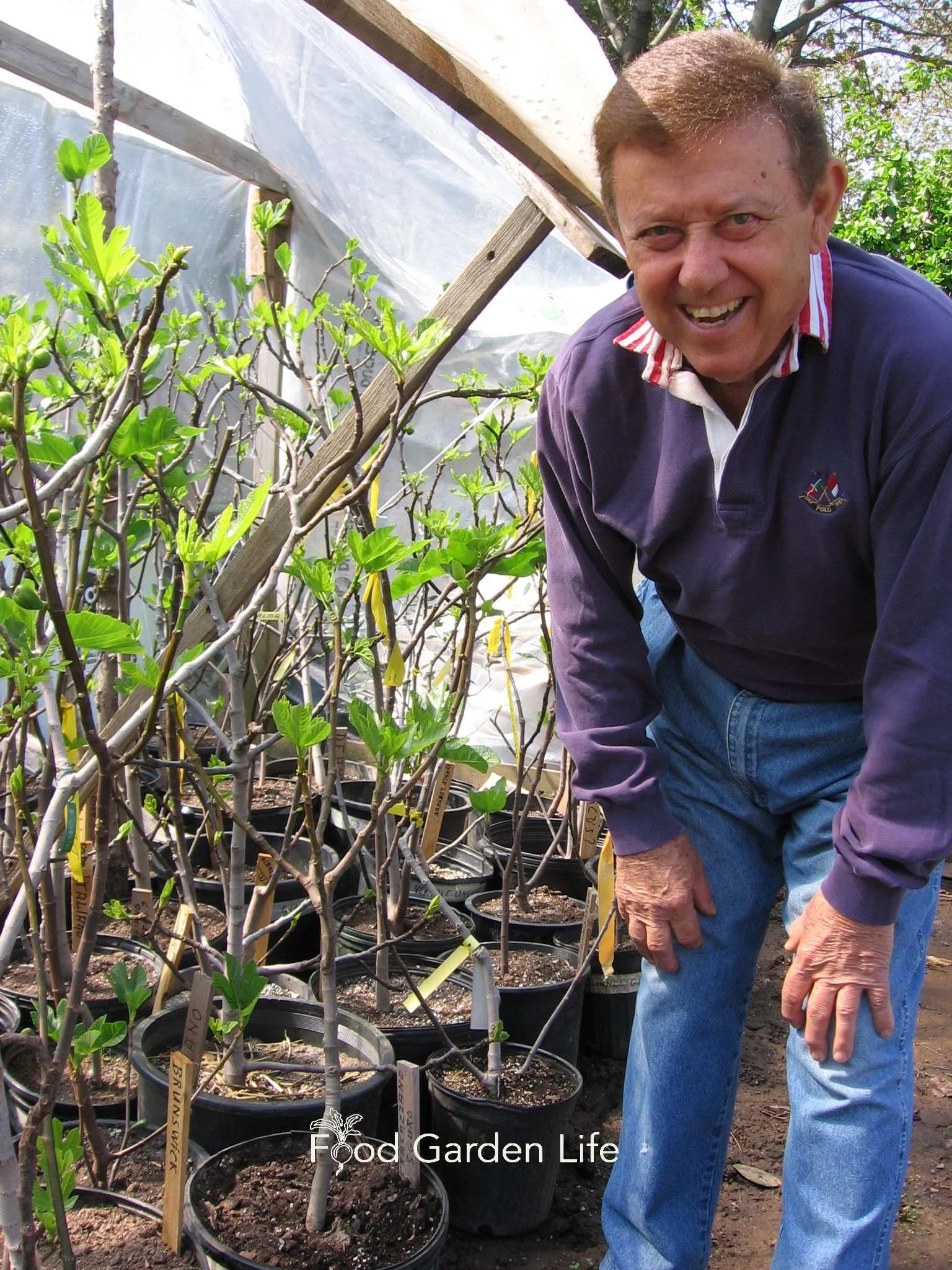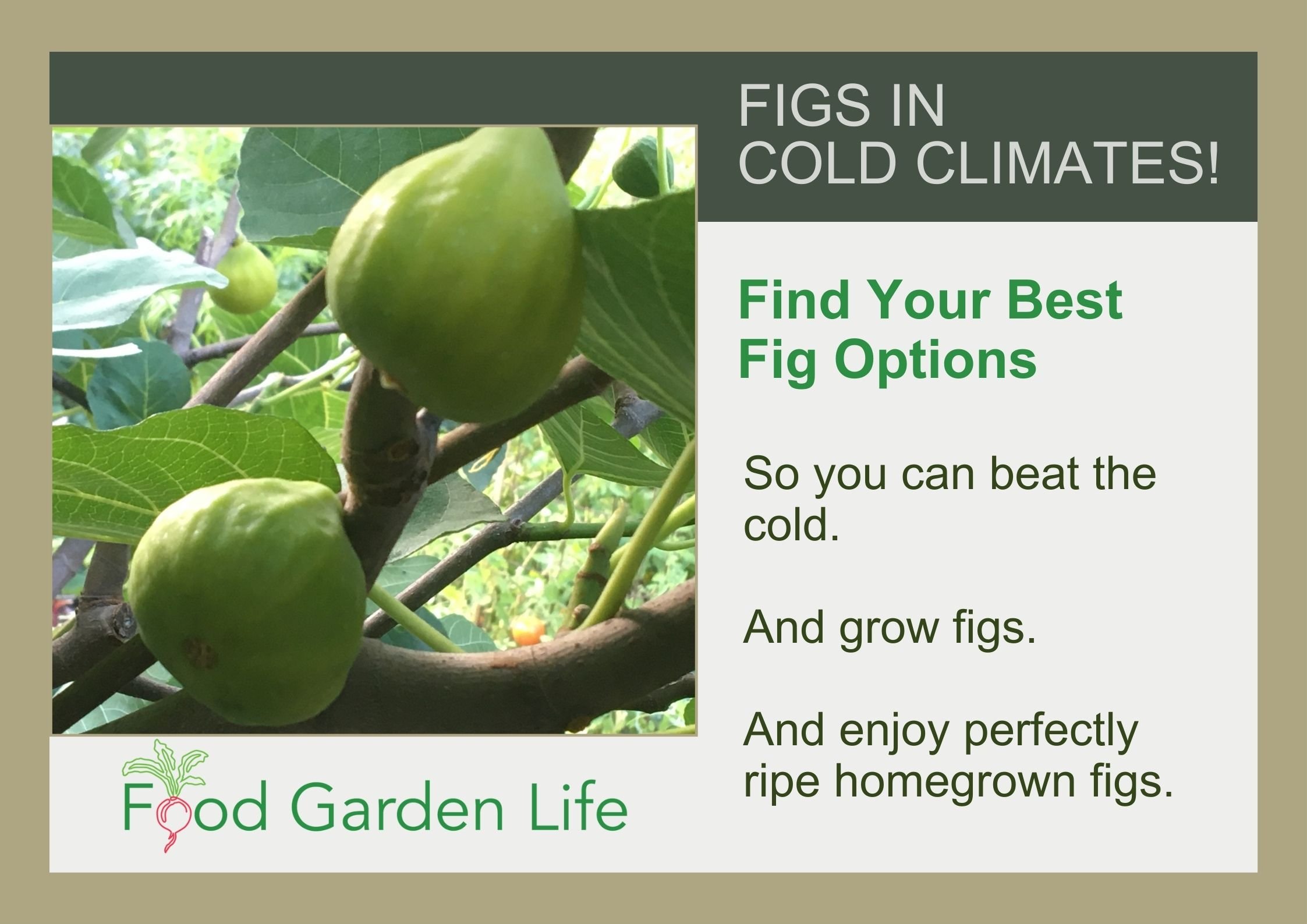Fig Trees in Canada: Ontario Fig Collector Shares Top Tips
By Steven Biggs
Tips for growing figs in Southern Ontario and beyond, from Adriano Ferreira.
Adriano’s Fig-Growing Tips
In 2009, I wrote an article for Edible Toronto magazine featuring two “fig fetishists” here in Southern Ontario, Adriano Ferreira and Peter Vicano.
In a follow-up chat with Adriano—my fig mentor—I asked him to give me his top fig-growing tips so I could share them here.
He said he’d only share if I spoke to him in Portuguese. I managed to say, “bom dia,” and that was about it! He graciously shared these tips.
If you’re wondering how to take care of a fig tree in Southern Ontario—in any cold climate—keep reading for Adriano’s tips.
Adriano Ferreira’s Top Tips
Soil for Fig Trees
Ferreira’s preferred soil for fig trees contains of one-third peat-based potting mix, one-third composted manure, and one-third compost, with some added perlite, dolomitic limestone, and vermiculite.
Adriano Ferreira shared his top fig-growing tips with me
Repotting Fig Trees
Repot fig trees every three to five years, drilling extra drainage holes along the bottom couple of inches of the pot.
Watering and Feeding Figs
During the summer, potted figs need lots of water, but when dormant or growing slowly, over-watering is the most common cause for fig trees dying.
If water doesn’t soak into a rootbound potted fig tree, insert a large nail into the soil, then fill the resulting hole with sand. This makes a channel for water to enter the root ball.
For feeding fig trees, Ferreira uses manure tea and fruit or tomato fertilizer.
Get Your Fig Trees Through Winter
And eat fresh homegrown figs!
Pruning Fig Trees
Train side shoots to grow horizontally, which encourages fruit formation.
Grow in the form of multi-stemmed fig bushes instead of trees for ease of maintenance and increased fruiting.
Here’s a guide to pruning fig trees.
Fig Ripening and Harvest
Embryonic figs are formed in late summer and carried through winter on dormant branches as bumps. These swell in spring with warm temperatures. Be careful of frost, which can damage the little figs once they begin to grow.
In September, remove fig fruit that are too small to ripen, redirecting energy to those that will.
Harvest when soft and the skin shows the impression of your fingerprint. Figs wilt at the neck and droop under their own weight. Splits and cracks often appear when ripe. If you pick figs too early you’ll see white sap.
Find out how to ripen figs faster in this this fig-ripening guide.
Overwintering Fig Trees
Pick off any fruit remaining after leaves drop off in the fall. These unripe figs will not ripen.
Bend down boughs of in-ground, multi-stemmed trees, then build an A-frame of wood and Styrofoam over the top. See a picture of Adriano’s A-frame in this article about fig tree winter protection.
For potted trees, lay pots on their side in wooden boxes (2-inch wide boards, forming a wall 12 to 18 inches high.) Cover the top with plywood, Styrofoam, and a tarp.
In partially heated area such as sunrooms, water only occasionally. Dormant figs don’t require light.
Find This Helpful?
If we’ve helped in your food-gardening journey, we’re always glad of support. You can high-five us below! Any amount welcome!
More on How to Grow Figs
More Fig Articles
Head back to the fig home page to search for fig articles by topic.
Fig Books
Fig Masterclass
The self-paced online fig masterclass gives you everything you need to know to grow and harvest your own figs in a cold climate!






